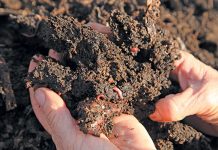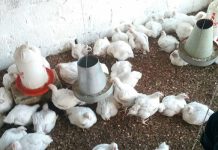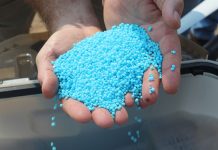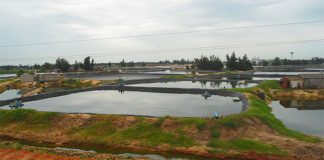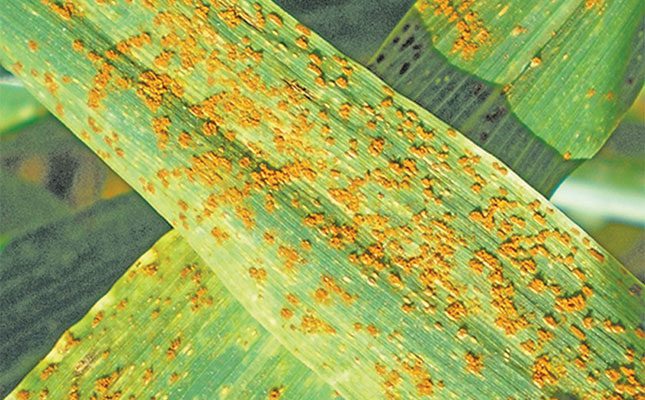
Photo: FW Archive
Fungal diseases represent a persistent threat to crops, causing significant economic losses and impacting food security. They occur when fungal spores germinate and penetrate a plant.
The fungus grows in, on and through the plant and can reproduce by releasing spores that can lead to secondary infections.
Leonard Oberholzer, corn go-to-market lead for Africa at Bayer Crop Science, told Farmer’s Weekly that for fungi to infect the crop, the fungi (pathogen), crop (host) and a favourable environment must be present at the same time. This phenomenon is known as the disease triangle.
To reduce the probability of fungal infections, integrated pest management (IPM) is handy to eliminate the host, manipulate the environment or reduce pathogens to help prevent their future spread.
An example is alternating between crops (crop rotation), planting resistant cultivars, and managing the amount of crop residue left on the soil before planting a new crop.
Contact vs systemic
Fungicides are broadly categorised based on their mode of action (MOA), encompassing two main types: contact and systemic.
Contact fungicides primarily act on the surface of plant tissues, forming a protective barrier that inhibits fungal spore germination and growth.
They do not penetrate plant tissues and instead provide localised protection, making them effective against foliar diseases and superficial infections. They offer immediate yet temporary protection as they can be washed away by rainfall or degraded by sunlight.
In contrast, systemic fungicides are absorbed by plant tissues and translocated throughout the plant, offering both preventive and curative action against fungal infections. These fungicides provide internal protection, targeting systemic diseases and soil-borne pathogens.
Systemic fungicides offer longer-lasting efficacy compared with contact fungicides, as they remain active within the plant for an extended period, providing continuous protection against fungal pathogens.
Preventative or curative
Fungicides can also be distinguished based on their application timing and purpose: preventative and curative.
Preventative fungicides are typically applied before the onset of disease symptoms, serving as proactive measures to protect plants from fungal infections.
By forming a protective barrier on plant surfaces, preventative fungicides inhibit fungal spore germination and establishment, effectively reducing disease incidence.
These fungicides are integral components of producers’ integrated disease management strategies, helping to minimise the spread of fungal pathogens under favourable environmental conditions.
For example, Oberholzer says a preventative spray is important in areas that experience high disease pressure, especially those that are humid and have high rainfall.
He adds that rainfall patterns are used to predict when diseases are likely to occur, and a suitable fungicide spray programme is worked out accordingly.
Curative fungicides are applied after disease symptoms become evident, with the aim of halting or slowing the progression of fungal infections.
While these fungicides may not completely eradicate established infections, they can suppress fungal growth and alleviate disease symptoms, providing much-needed relief to affected plants.
Curative fungicides are often used in conjunction with preventative measures to manage disease outbreaks effectively, particularly in situations where early detection may have been missed or preventive measures were insufficient.
Fungicides exert their antifungal effects through various mechanisms, categorised into different MOA groups.
They can have the same MOA but different target sites. Understanding these MOA groups is essential for selecting appropriate fungicides and implementing effective resistance management strategies.
These groups are:
- Multisite inhibitors – They target multiple sites within fungal cells, making it challenging for pathogens to develop resistance. By disrupting various metabolic processes, multisite inhibitors exhibit broad-spectrum activity against a wide range of fungal pathogens.
- Single-site inhibitors – These target specific enzymes or biochemical pathways essential for fungal growth and survival, offering targeted control against particular types of fungal pathogens. These fungicides may have a narrower spectrum of activity but can be highly effective when used judiciously.
According to Mynhardt Noeth, horticulture and cereal lead at Bayer Crop Science Africa, the most common fungicide MOA groups used in horticulture, cereals and row crops are triazoles, strobilurins, and succinate dehydrogenase inhibitors (SDHIs).
New on the market, SDHIs have a narrower spectrum of control, are highly active against the diseases they target and have longer residual activity.
Each of the groups has a different MOA and when considering a fungicide spray programme, it is effective to alternate between different fungicides.
Multinational companies such as Bayer Crop Science use products that have two active ingredients and two MOAs in one product, such as a triazole and a strobilurin.
Fungicide resistance
Noeth adds that producers must be aware of the different MOAs. Although there are many fungicides under different trade names available on the market, those with the same MOAs must not be sprayed consecutively.
Fungicide resistance starts to build up when the same active ingredient is used spray after spray.
Fungicide resistance poses a significant challenge to sustainable disease management, necessitating proactive strategies to mitigate its impact. Effective resistance management requires a multifaceted approach that integrates cultural, biological and chemical control measures.
Resistance-management methods are as follows:
- Rotate fungicides – Rotate the use of fungicides with different MOAs to reduce selection pressure on fungal populations and delay the onset of resistance. By alternating between fungicides with distinct MOAs, producers can minimise the risk of resistance development and preserve the efficacy of available chemistries.
- Mix fungicides – Mix or tank-mix fungicides with different MOAs to create synergistic effects and broaden the spectrum of activity against fungal pathogens.
By combining fungicides with complementary MOAs, producers can enhance disease-control efficacy while reducing the likelihood of resistance emergence. - Limit fungicide use – Exercise caution and restraint when applying fungicides to avoid unnecessary or excessive usage, which can accelerate resistance development. IPM practices emphasise the importance of employing fungicides only when necessary and integrating non-chemical control methods to reduce reliance on chemical interventions.
- Monitor resistance development – Regularly monitor fungal populations for signs of resistance emergence through field surveys, laboratory assays and disease monitoring programmes. Early detection of resistance allows producers to adjust their fungicide programmes accordingly and implement targeted management strategies to mitigate its spread.
Safe handling of fungicides
The proper handling and application of fungicides are essential to minimise risks to human health, environmental contamination and non-target organism exposure.
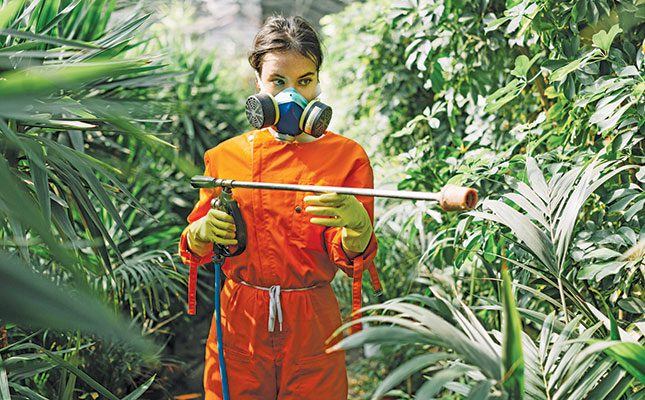
It is imperative to follow the following practices:
- Read and follow label instructions – Thoroughly read and adhere to instructions provided by fungicide manufacturers, including application rates, timing and safety precautions. Labels provide essential information on proper handling, storage, disposal and personal protective equipment (PPE) requirements.
- Use PPE – Use the appropriate protective equipment, including gloves, goggles and respirators, when handling and applying fungicides to minimise exposure to potentially hazardous chemicals.
PPE requirements may vary depending on the formulation and toxicity of the fungicide being used.
- Practise good application techniques – Apply fungicides using calibrated equipment and follow recommended application practices to ensure uniform coverage and optimal efficacy.
To avoid drift and run-off, which can lead to off-target contamination, avoid spraying during windy conditions or when rainfall is expected.
- Store fungicides safely – Store fungicides in a secure location away from children, pets, food and water sources, following guidelines for proper storage temperature, ventilation and segregation from incompatible materials.
Ensure that fungicide containers are tightly sealed and labelled correctly to prevent accidental spills, leaks, or incorrect usage.
- Properly dispose of unused fungicides – To prevent environmental contamination, Dispose of unused fungicides, empty containers, and rinse water according to local regulations and guidelines.
Do not reuse empty containers for other purposes, and avoid pouring rinse water or leftover fungicide into water bodies or drainage systems.
Fungicides play a critical role in modern agriculture, enabling producers to combat fungal diseases and safeguard crop health and productivity.
By understanding the different types of fungicides, their MOAs, strategies for resistance management, and the importance of safe handling practices, producers can effectively manage fungal diseases while minimising risks to human health and the environment.
Integrated disease management approaches that combine fungicides with cultural, biological and physical control methods offer sustainable solutions for disease control and contribute to the long-term viability of agricultural systems.
For more information regarding fungicides, visit the Bayer Crop Science South Africa website at cropscience.bayer.africa/za/en-za.html.



